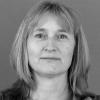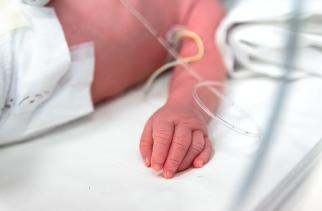Senior onderzoeker Infectieziekten in de Eerste Lijn
Publicatie
Publicatie datum
Evaluation of a standardised protocol to measure the disease burden of respiratory syncytial virus infection in young children in primary care.
Summeren, J.J.G.T. van, Rizzo, C., Hooiveld, M., Korevaar, J.C., Hendriksen, J.M.T., Dückers, M.L.A., Loconsole, D., Chironna, M., Bangert, M., Demont, C., Meijer, A., Caini, S., Pandolfi, E., Paget, J. Evaluation of a standardised protocol to measure the disease burden of respiratory syncytial virus infection in young children in primary care. BMC Infectious Diseases: 2021, 21(1), p. nr. 705.
Lees online
Background
A better understanding of the burden of respiratory syncytial virus (RSV) infections in primary care is needed for policymakers to make informed decisions regarding new preventive measures and treatments. The aim of this study was to develop and evaluate a protocol for the standardised measurement of the disease burden of RSV infection in primary care in children aged < 5 years.
Methods
The standardised protocol was evaluated in Italy and the Netherlands during the 2019/20 winter. Children aged < 5 years who consulted their primary care physician, met the WHO acute respiratory infections (ARI) case definition, and had a laboratory confirmed positive test for RSV (RT-PCR) were included. RSV symptoms were collected at the time of swabbing. Health care use, duration of symptoms and socio-economic impact was measured 14 days after swabbing. Health related Quality of life (HRQoL) was measured using the parent-proxy report of the PedsQL™4.0 generic core scales (2–4 years) and PedsQL™4.0 infant scales (0–2 years) 30 days after swabbing. The standardised protocol was evaluated in terms of the feasibility of patient recruitment, data collection procedures and whether parents understood the questions.
Results
Children were recruited via a network of paediatricians in Italy and a sentinel influenza surveillance network of general practitioners in the Netherlands. In Italy and the Netherlands, 293 and 152 children were swabbed respectively, 119 and 32 tested RSV positive; for 119 and 12 children the Day-14 questionnaire was completed and for 116 and 11 the Day-30 questionnaire. In Italy, 33% of the children had persistent symptoms after 14 days and in the Netherlands this figure was 67%. Parents had no problems completing questions concerning health care use, duration of symptoms and socio-economic impact, however, they had some difficulties scoring the HRQoL of their young children.
Conclusion
RSV symptoms are common after 14 days, and therefore, measuring disease burden outcomes like health care use, duration of symptoms, and socio-economic impact is also recommended at Day-30. The standardised protocol is suitable to measure the clinical and socio-economic disease burden of RSV in young children in primary care.
A better understanding of the burden of respiratory syncytial virus (RSV) infections in primary care is needed for policymakers to make informed decisions regarding new preventive measures and treatments. The aim of this study was to develop and evaluate a protocol for the standardised measurement of the disease burden of RSV infection in primary care in children aged < 5 years.
Methods
The standardised protocol was evaluated in Italy and the Netherlands during the 2019/20 winter. Children aged < 5 years who consulted their primary care physician, met the WHO acute respiratory infections (ARI) case definition, and had a laboratory confirmed positive test for RSV (RT-PCR) were included. RSV symptoms were collected at the time of swabbing. Health care use, duration of symptoms and socio-economic impact was measured 14 days after swabbing. Health related Quality of life (HRQoL) was measured using the parent-proxy report of the PedsQL™4.0 generic core scales (2–4 years) and PedsQL™4.0 infant scales (0–2 years) 30 days after swabbing. The standardised protocol was evaluated in terms of the feasibility of patient recruitment, data collection procedures and whether parents understood the questions.
Results
Children were recruited via a network of paediatricians in Italy and a sentinel influenza surveillance network of general practitioners in the Netherlands. In Italy and the Netherlands, 293 and 152 children were swabbed respectively, 119 and 32 tested RSV positive; for 119 and 12 children the Day-14 questionnaire was completed and for 116 and 11 the Day-30 questionnaire. In Italy, 33% of the children had persistent symptoms after 14 days and in the Netherlands this figure was 67%. Parents had no problems completing questions concerning health care use, duration of symptoms and socio-economic impact, however, they had some difficulties scoring the HRQoL of their young children.
Conclusion
RSV symptoms are common after 14 days, and therefore, measuring disease burden outcomes like health care use, duration of symptoms, and socio-economic impact is also recommended at Day-30. The standardised protocol is suitable to measure the clinical and socio-economic disease burden of RSV in young children in primary care.
Gegevensverzameling




